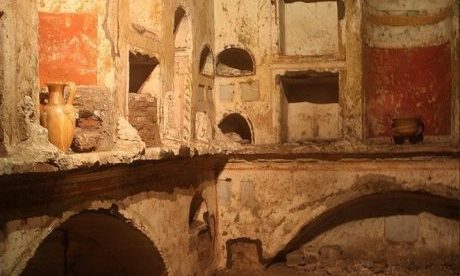Pope Pius XI’s will stated he wanted to be buried as close as possible to what tradition has considered to be the tomb of St. Peter.
Pius XII then began the excavations under St. Peter’s Basilica, in order to fulfill the last will of his predecessor.
With that single gesture, he also showed confidence in both archaeological science and the countless generations of Christians who had considered the Basilica as, indeed, the burial place of the Apostle.
After the excavations, which were followed by exhaustive historical, archaeological and architectural studies, Pius XII ended the jubilee of 1950 exclaiming: “The final conclusion of the works and studies carried out in the Basilica is a very clear ‘yes’: the tomb of the Prince of the Apostles has been found.”
From the Circus of Nero to St. Peter’s Basilica
After the fire of Rome in 64, Emperor Nero started a new Christian persecution, during which — according to tradition — St. Peter was crucified upside down, in the circus (an oval ground used for racing and other public spectacles) located in the Vatican Hill.
The body of the saint was then put to rest in a tomb under a small roof tile, in the pagan necropolis on the very same hill.
Quickly, as the necropolis stretched to the banks of the Tiber, St. Peter’s burial place began to attract pilgrims, even if discreetly at first.
In the 4th century, Emperor Constantine allowed the development of Christian worship and decided to build a basilica in honor of St. Peter, its altar being aligned with the tomb of the apostle.
Above the original tomb, Constantine had a monument built, three meters high, in marble and porphyry, of which a column and a section of wall are still preserved.
When the present majestic basilica was built, the papal altar was then placed on top of the tomb of St. Peter. Continue reading
Sources
- Aleteia
- Image: Gidget Goes to Rome
News category: Features.




